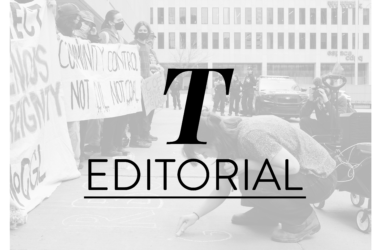Last week, photos surfaced online of a costume party at Queen’s University in which students dressed as various stereotypes of other nationalities and cultures. White students were photographed dressed as incarcerated Mexicans, Buddhist monks, Viet Cong guerillas, and other stereotypical outfits at the event. Queen’s Principal Daniel Woolf and other members of the university administration condemned the event—which did not occur on campus—as “completely unacceptable.” While the event was not sanctioned by Queen’s administration, Woolf stated that “appropriate action” would be taken if any links to the university were discovered.
Instead of dismissing the Queen’s case as an isolated incident, we must remember that without ongoing efforts to discuss and educate students on issues of racism, a similar episode could happen at McGill or, indeed, anywhere. The costume party comes at a time when incidences of racial harassment and hate crimes are increasing both in the U.S. and Canada, further reinforcing the need to confront and denounce instances of racism in any form. For McGill students, the Queen’s party should serve as a sobering reminder of the continued ignorance of racial issues on Canadian campuses as well as the importance of proactive action by students and staff. While it may be tempting to simply label and chastise the students involved, a more productive response must attempt to address potential causes of such behaviour, and ask what can be done to prevent such an incident from happening again
When addressing racism in the student body, student initiatives are an effective first step. At McGill, initiatives like Rez Project and Anti-Oppression Programming help first-year students in residence develop an awareness of issues such as racism and the vocabulary to discuss them. A variety of student and faculty organizations, such as the Students’ Society of McGill University (SSMU), the Quebec Public Interest Research Group (QPIRG), the Black Students’ Network (BSN), and the Arts Undergraduate Society (AUS), host workshops around Halloween to educate students on cultural appropriation. However, initiatives like Rez Project are limited to students in residence, and even when paired with faculty efforts, may not reach the entirety of the student body. It is imperative to keep developing means to make as many students as possible aware of the potential harm they may cause by mocking the cultures of their peers. Students that are more aware of these issues will be more sympathetic to the victims of racism, and will abstain from engaging in racist behaviour.
University administrators also have the potential to confront racism on their campuses. By strongly condemning these types of incidents, as Queen’s University has, administrators reinforce the message that racist or discriminatory behaviour is inappropriate, and that it is not representative of their school. But universities don’t need to wait for an incident before voicing their disapproval; a statement condemning racism and other forms of discrimination in McGill’s Student Code of Conduct would help create an environment where this behaviour is explicitly denounced. In an email to members of the McGill community on Nov. 16, the administration released the Report of the McGill Ad Hoc Working Group on Systemic Discrimination, which compiled the experiences of racialized minority tenure-track faculty and made suggestions regarding equity in hiring practices. A more diverse faculty would help expose students to a wider variety of perspectives on racial issues.
Issues of race persist on campus because they are issues that affect our society as a whole. As such, fighting racism on campus can only help in the fight against racism in broader society. Larger scale social solutions, like creating an educational system that teaches kids the history of marginalized peoples before they reach the university level, would alleviate some of this ignorance at all levels of society. Not only students, but all members of society should strive for a better understanding of the history of racial inequity and discrimination in Canada, and must make renewed efforts to listen to and sympathize with its victims. This latest incident at Queen’s should remind students that the fight against racism in Canada is ongoing and requires their engagement.









